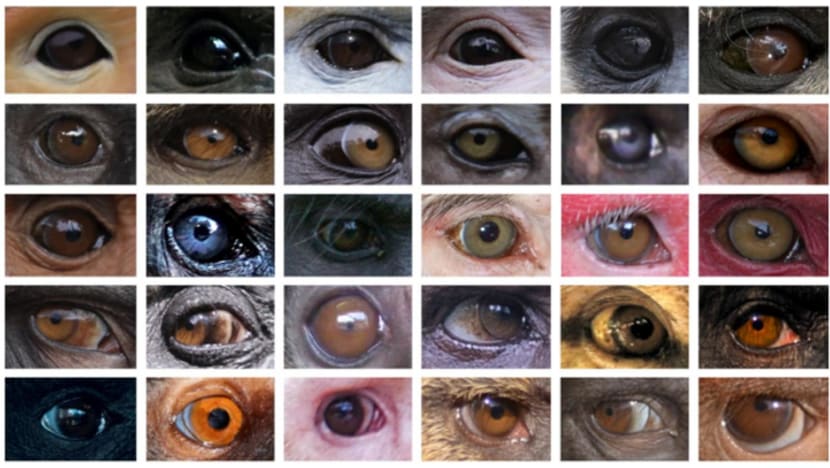Eye colour variation in primates partly due to lighting differences in habitats: NUS study

Some of the images measured and analysed in the study, picturing the diversity in colour and forms. (Credit: Juan Olvido Perea-Garcia)
SINGAPORE: Why do some people have lighter eyes than others?
Differences in iris colouration have traditionally been explained as a result of sexual selection. However, a recent study led by National University of Singapore (NUS) researchers has helped to uncover another important factor.
Findings published in Scientific Reports on Saturday (Oct 15) showed that variation in iris colouration is partly due to differences in lighting in the habitats of primate species.
Researchers from NUS' Department of Biological Sciences together with collaborators from Republic Polytechnic, the University of St Andrews and Leiden University, have discovered that ambient light is an important factor in determining eye colour across primate species.
The research team collected hundreds of photographs from 77 primate species and measured the brightness and colour of different parts of their eyes, NUS said in a press release.
"What is exciting about this research is that by using the comparative method in evolutionary biology, we find that many species of primates independently evolved bluer eyes at higher latitudes, just like what happened within our own species," said Professor Antonia Monteiro from NUS' Department of Biological Sciences.
The researchers found that species living farther from the equator tend to have lighter conjunctiva, known as the tissue surrounding the iris, not unlike skin pigmentation in humans.
"Iris colour also shifted to become greener or bluer, as populations were found farther away from the equator, where irises tend to be browner," said NUS in the press release.
Most previous studies addressing diversity in iris colour in humans revolved around the idea that colour was sexually selected, said NUS.
This was also the preferred explanation for diversity in skin pigmentation until evidence tipped the balance towards protection from UV rays.
"Seeing that differences in eye colour could be explained by changes in lighting typical of the natural ranges of primate species suggests that iris colour may have been selected by environmental conditions in humans, similar to skin pigmentation," NUS said.
Although this study provides a possible solution to the puzzle of iris colour variation, many mysteries remain, said postdoctoral researcher Dr Juan O Perea-Garcia.
More research is needed to understand why some species living in the equator sometimes have striking blue eyes, like the brown spider monkey, or why some species with similar ranges have different levels of conjunctival pigmentation, like the chimpanzee and bonobo.













